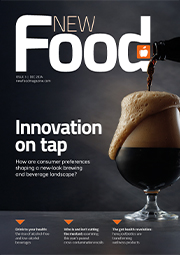Whitepaper: PCR: What, why and how?
- Like
- Digg
- Del
- Tumblr
- VKontakte
- Buffer
- Love This
- Odnoklassniki
- Meneame
- Blogger
- Amazon
- Yahoo Mail
- Gmail
- AOL
- Newsvine
- HackerNews
- Evernote
- MySpace
- Mail.ru
- Viadeo
- Line
- Comments
- Yummly
- SMS
- Viber
- Telegram
- Subscribe
- Skype
- Facebook Messenger
- Kakao
- LiveJournal
- Yammer
- Edgar
- Fintel
- Mix
- Instapaper
- Copy Link
Posted: 16 March 2018 | Hygiena | No comments yet
While culture methods still serve as the ‘gold standard’ in the industry, newer technologies promise to deliver equal detection sensitivity in a significantly shorter time.
This series of articles will discuss one of the most popular rapid methods measuring nucleic acids.
Nucleic acids, including DNA and RNA are biomolecules that are an integral part of all living cells. This ubiquitous nature makes them excellent indicators for the presence of life forms, including pathogenic microorganisms.
The Polymerase Chain Reaction (PCR) is an amplification technique that generates thousands of copies of a targeted DNA region in a few hours. This makes PCR a powerful tool for detection of specific bacteria such as pathogens.
The rest of this whitepaper is restricted - login or subscribe free to access


Why subscribe? Join our growing community of thousands of industry professionals and gain access to:
- bi-monthly issues in print and/or digital format
- case studies, whitepapers, webinars and industry-leading content
- breaking news and features
- our extensive online archive of thousands of articles and years of past issues
- ...And it's all free!
Click here to Subscribe today Login here










